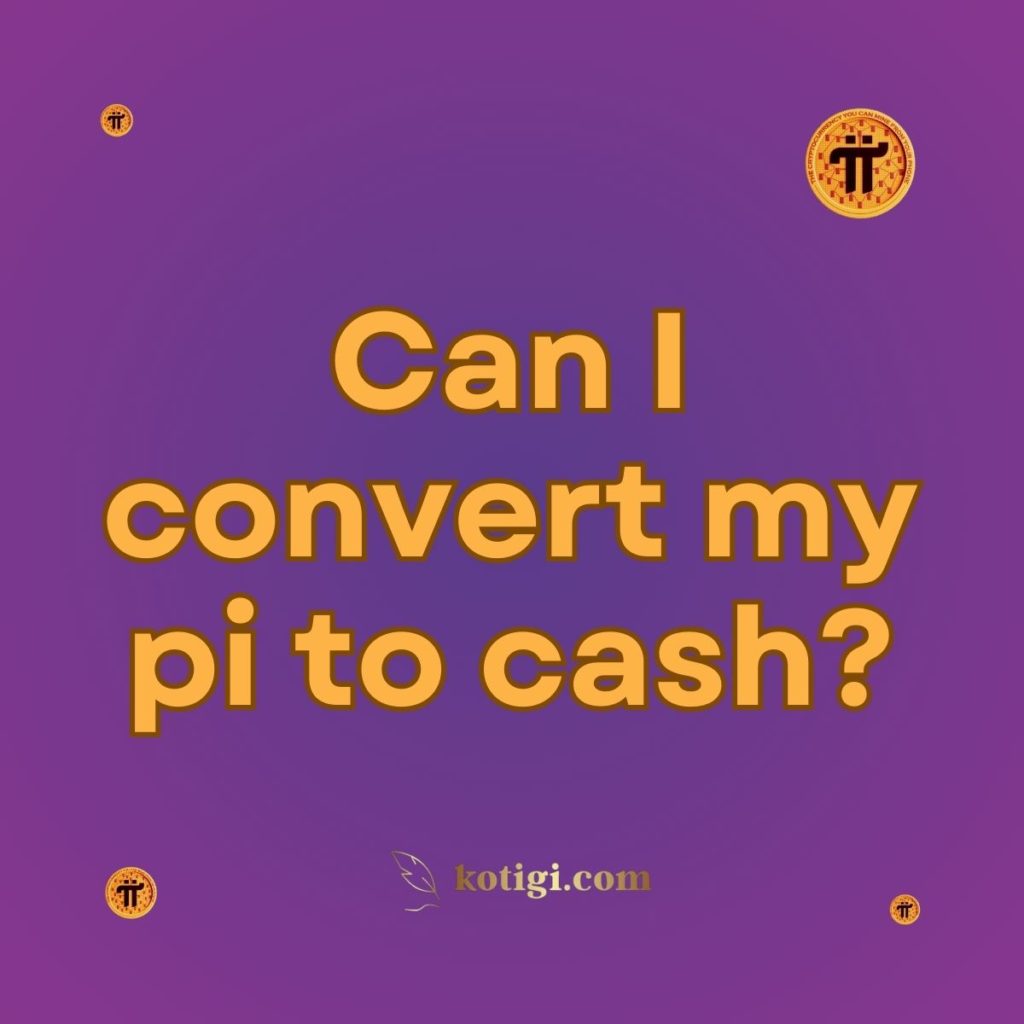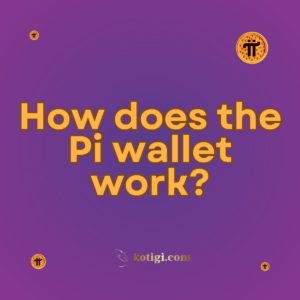
As the Pi Network gains momentum, many pioneers wonder, “Can I convert my Pi to cash?” Pi, a digital currency that can be mined using smartphones, has amassed millions of users globally. However, its potential to be converted into traditional currency is a significant concern for many.
This article will dive deep into the current state of Pi’s usability, whether you can cash out your Pi, and what to expect in the near future.
What is Pi Network?
Before diving into whether Pi can be converted into cash, it’s essential to understand what Pi Network is.
1. Pi’s Vision and Mission
Pi Network was developed to create an inclusive digital currency ecosystem that anyone could access. Unlike other cryptocurrencies such as Bitcoin, Pi is mined on a smartphone without the need for high computing power or expensive equipment.
2. How Pi Mining Works
Mining Pi is straightforward. After downloading the app, users can start mining Pi daily by simply clicking a button. There are no computational algorithms to solve, making it eco-friendly and highly accessible.
3. Pi’s Current Status
As of now, Pi is in the Testnet phase, which means it is not yet fully operational on a blockchain that allows for trading or conversion into other currencies. This phase is crucial for ironing out issues and preparing for the launch of the Mainnet.
Can You Convert Pi to Cash Now?
The direct answer to whether you can convert Pi to cash right now is no. Pi Network is still in its Testnet phase, meaning the Pi you’ve mined is not yet available for trading or exchange. But let’s break this down in detail.
1. Pi’s Testnet Phase
During the Testnet phase, Pi Network is focusing on growing its user base, improving network stability, and enhancing security. This phase is essential for preparing the network to transition to the Mainnet, where real transactions and exchanges can take place.
2. Why You Can’t Convert Pi to Cash Right Now?
Pi is not listed on any major cryptocurrency exchanges like Binance, Coinbase, or Kraken because it is still in development. Until Pi officially launches its Mainnet and gets listed on these exchanges, you cannot trade it for cash or any other cryptocurrency.
3. What Will Change After the Mainnet Launch?
Once Pi transitions to its Mainnet phase, it will become fully operational on its blockchain, allowing for real transactions. At this point, users may be able to transfer Pi to other users, purchase goods or services with Pi, and, most importantly, exchange Pi for other cryptocurrencies or fiat money like USD or EUR.
How Will You Be Able to Cash Out Pi in the Future?
Pi Network’s Mainnet launch is a much-anticipated event, as it will open the doors for real-world utility and conversion into cash. Here’s how the process is expected to work.
1. Listing on Exchanges
For Pi to be converted into cash, it must be listed on major cryptocurrency exchanges like Binance or Coinbase. These exchanges allow users to trade cryptocurrencies for other digital assets or fiat currencies. Once Pi is listed, users can sell their Pi for Bitcoin, Ethereum, or traditional currencies like USD or EUR.
2. Peer-to-Peer Transactions
One potential feature after the Mainnet launch is peer-to-peer (P2P) transactions. Users could trade Pi directly with other users for goods, services, or even cash. This decentralized approach would allow for direct exchanges without the need for a central platform.
3. Integration with Payment Platforms
Pi could also integrate with digital payment platforms like PayPal or Stripe, allowing users to convert their Pi into fiat currency for everyday purchases.
4. Pi Network’s Marketplace
Pi Network has expressed plans to create its own marketplace, where users can spend their Pi on real-world goods and services. This marketplace could serve as an intermediary step for converting Pi into value before it becomes easily tradable on external platforms.
Factors That Will Influence Pi’s Value
1. Adoption Rate
The value of Pi will largely depend on how widely it is adopted. The more users and businesses accept Pi as a form of payment, the more valuable it will become.
2. Supply and Demand
Like any currency, Pi’s value will be dictated by market forces of supply and demand. If demand for Pi increases after the Mainnet launch and supply remains limited, the price will likely rise, making it more lucrative to trade or convert into cash.
3. Utility in the Ecosystem
Pi’s utility will also determine its value. If Pi is adopted by major online platforms, e-commerce websites, or even brick-and-mortar stores, its value will increase as it becomes more practical for everyday transactions.
4. Regulation
Cryptocurrency regulations are constantly evolving, and Pi’s value may be influenced by how governments choose to regulate digital currencies. Favorable regulations could enhance Pi’s value, while restrictive policies might limit its potential.
Example: How Pi Conversion Might Work in the Future?
Let’s say Pi is listed on a major cryptocurrency exchange like Binance after the Mainnet launch. You decide to convert 100 Pi into Bitcoin, which is tradable for cash.
Here’s how the process might work:
- Step 1: You transfer your Pi from your Pi Wallet to the exchange.
- Step 2: You place a sell order to convert your Pi into Bitcoin (BTC).
- Step 3: Once the transaction is completed, you now hold BTC in your exchange wallet.
- Step 4: You sell your BTC for USD, and the funds are transferred to your bank account.
This is a simplified example, but it illustrates how Pi could eventually be converted into cash once it’s listed on cryptocurrency exchanges.
What You Can Do with Pi Right Now?
While you cannot convert Pi to cash at the moment, there are still ways to engage with the network and prepare for its future launch.
1. Continue Mining
Pi Network is still open for mining, though the rate decreases as more users join. By continuing to mine daily, you are increasing your Pi holdings, which could be valuable once Pi reaches the Mainnet.
2. Invite More Users
Building your earning team by referring more users can increase your mining rate. This is particularly valuable while the Pi mining rate is still active.
3. Participate in Pi’s Ecosystem
Pi Network encourages pioneers to engage with the platform, whether by building security circles or contributing to the app’s development. Active participation might offer benefits down the line.
Is Pi Worth the Wait?
For many pioneers, the wait for Pi to become tradable is a test of patience. While it’s impossible to predict exactly when Pi will be convertible to cash, its growing user base and community-driven development suggest promising potential. However, like any cryptocurrency, investing time in Pi comes with risks, and there are no guarantees.
Conclusion
As of now, you cannot convert your Pi into cash because Pi Network is still in its Testnet phase. However, the future looks promising. With the Mainnet launch expected to unlock real-world utility, you may be able to trade, sell, or convert your Pi into cash once it’s listed on exchanges.
While the timeline for Pi’s Mainnet launch is not set in stone, continued mining and participation in the Pi Network could potentially lead to financial rewards in the future.
Can I convert my pi to cash?
Currently, you cannot convert Pi to cash because it is still in the Testnet phase. However, once Pi transitions to its Mainnet and gets listed on cryptocurrency exchanges, it may be tradable for cash.
Key Takeaways
- Stay Engaged: Continue mining Pi, building your team, and participating in the ecosystem for potential future rewards.
- Testnet Phase: Pi is currently in its Testnet phase, meaning it is not yet tradable or convertible to cash.
- Mainnet Launch: Once Pi’s Mainnet launches, users may be able to convert Pi to cash via cryptocurrency exchanges.
- Potential for Peer-to-Peer Transactions: After the Mainnet, users could engage in P2P trades to exchange Pi for goods or cash.
- Building Value: The more widely Pi is adopted, the more valuable it will become in the future.





